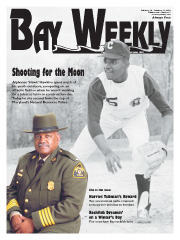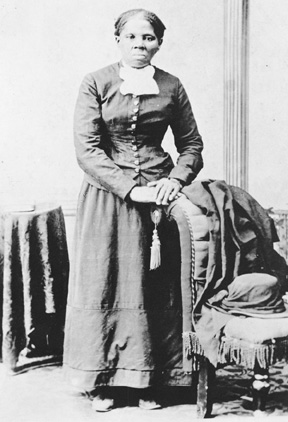Chesapeake Bay's Independent Newspaper ~ Since 1993
1629 Forest Drive, Annapolis, MD 21403 ~ 410-626-9888
Volume xviii, Issue 7 ~ February 18 - February 24, 2010
Home \\ Correspondence \\ from the Editor \\ Submit a Letter \\ Classifieds \\ Contact Us
Best of the Bay \\ Dining Guide \\ Home & Garden Guide \\ Archives \\ Distribution \\ Advertising![]()


Harriet Tubman’s Reward
|
|
|
Her home state of Maryland has already recognized Tubman for her struggles against slavery with the establishment of the Harriet Tubman Underground Railroad State Park, the first state park in Dorchester County.
The state is building a $2.2 million visitor center on seven acres within Blackwater National Wildlife Refuge. This discovery center will tell the dramatic stories of escape and capture along Maryland’s waterways and roads.
The U.S. Department of Transportation has designated the Harriet Tubman Underground Railroad Byway to be an All American Road. The citation describes the area as having “the most pristine and well-preserved working landscapes found along the East Coast.”
The driving tour begins in Cambridge, passes by marshes and farms near Blackwater National Wildlife Refuge, travels through Denton to the Adkins Arboretum near Tuckahoe State Park and ends at the Mason and Dixon Line, the pre-Civil War boundary between bondage and freedom for those escaping enslavement.
In Cambridge, the Harriet Tubman Museum has told her story since 1989. This small museum reflects the dedication of the people of Dorchester County to honor a hero who came from their midst.

![]() Harriet Tubman was a remarkable woman. Born a slave, this uneducated woman of small stature possessed a fierce courage and intelligence. She escaped slavery when the death of her owner threatened her family with separate sale to plantations in the Deep South.
Harriet Tubman was a remarkable woman. Born a slave, this uneducated woman of small stature possessed a fierce courage and intelligence. She escaped slavery when the death of her owner threatened her family with separate sale to plantations in the Deep South.
Incredibly, after finding freedom herself, she risked everything to return to the Eastern Shore time and time again. She brought to freedom an estimated 50 to 60 of her friends and family members.
With the passage of the Fugitive Slave Act in 1850, true freedom was no longer possible in Pennsylvania or the so called Free States that had outlawed slavery. Freedom took crossing the border into Canada.
This was all illegal: escaping, helping enslaved people escape and harboring people escaping slavery. We may tend to forget that slavery was supported by the full force of law: local, state and federal.
In defiance of these laws and to help her people, Tubman risked her own freedom and her life many times.
Tubman must have possessed extraordinary visual and spatial acuity given her ability to find her way through the fields, marshes and dirt roads of the plantation-era Eastern Shore.
The Underground Railroad had a network of houses and barns providing escaping people with shelter and food. But finding them couldn’t have been easy, especially during the long winter nights when most escape attempts were made.
Tubman used this ability during the Civil War as a scout and spy for Union forces in South Carolina. It must have been an odd sight at the time, this small black woman conferring with generals and colonels about roads, river crossings and the locations of Confederate soldiers. But that was what she did.
In her later life Tubman supported many of the progressive movements of the time, including women’s suffrage.
Tubman lived to be 91. She died in Auburn, New York, in 1913.
Learn More
BIOGRAPHY Bound for the Promised Land: Harriet Tubman, Portrait of an American Hero, New York: 2003.
MUSEUM The Harriet Tubman Museum, 424 Race Street, Cambridge, Tu-F 10am-3pm; Sa Noon-4pm.
TOURING www.tourdorchester.org and www.byways.org/explore/states/MD
WEBSITES www.hariettubman.com and www.harriettubmanbiography.com
BAY WEEKLY www.bayweekly.com (search Harriet Tubman)
© COPYRIGHT 2010 by New Bay Enterprises, Inc. All rights reserved.


 Along the Underground Railroad, a network of houses and barns, like the Leverton Safe House, right, provided escaping people with shelter and food.
Along the Underground Railroad, a network of houses and barns, like the Leverton Safe House, right, provided escaping people with shelter and food.